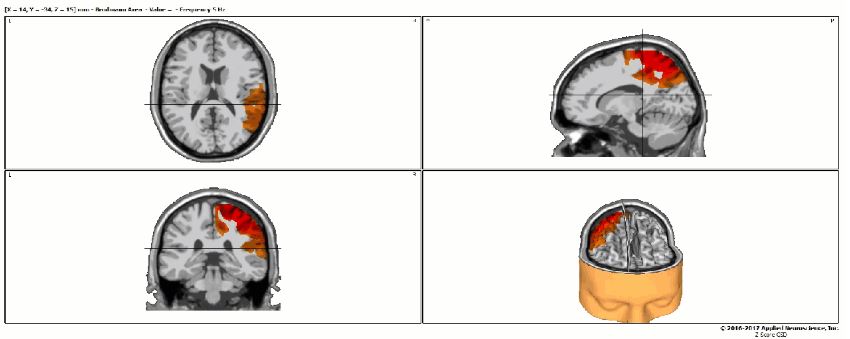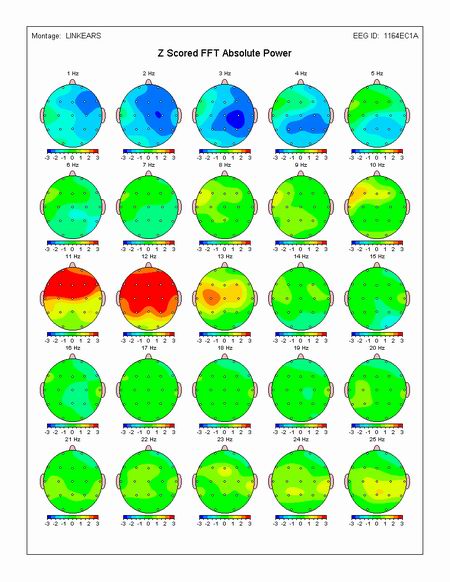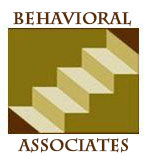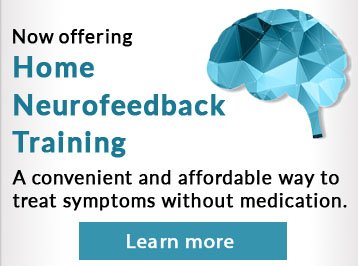What is a qEEG Brain Scan?
A Quantitative Electroencephalogram (qEEG) commonly referred to as a “Q” is a useful, objective assessment that is helpful in diagnosing ADD/ADHD, depression, anxiety and more. While typical brain imaging techniques such as MRIs, CAT scans and x-rays measure brain structure, an EEG measures brain activity.
The qEEG brain scan produces a series of visual “brain maps” that are analyzed in order to understand what is happening in the brain, where it is happening and how problematic the issue is. This brain mapping is typically done in one 45 minute session and involves placing a non-invasive EEG cap onto the patients head. Subsequent qEEGs will be administered in order to measure progress and adjust treatment as necessary.
After the brain scan, your licensed clinician will devise an individualized treatment plan that often includes neurofeedback training.
Example: QEEG of a healthy brain compared to common diagnoses.

The QEEG helps locate the exact problem area in the brain.

What is the process?
A non-invasive EEG cap is placed on the patient’s head to record brain activity.

After your brain’s activity is recorded, the computer generates a series of “visual maps” that are compared to published databases to check for deviations from normal patterns and evaluated as to whether it contains any patterns known to be associated with clinical conditions like ADHD, anxiety, addiction and depression. The Board Certified Neurotherapist or Clinician overseeing your case will analyze the results and discuss ongoing neurofeedback training.
Sample QEEG Report of brain activity

What are the next steps?
Patients must first complete an initial consultation with Dr. Robert Reiner (Adults) or Dr. Heather Davidson (Children, Teens). After the initial consultation, your qEEG brain scan will be scheduled with one of our expert staff members. Treatment may require you to complete an MMPI-2 personality test or other psychological testing to fully understand your history and diagnosis. Same and next day appointments are typically available Monday through Thursday.


